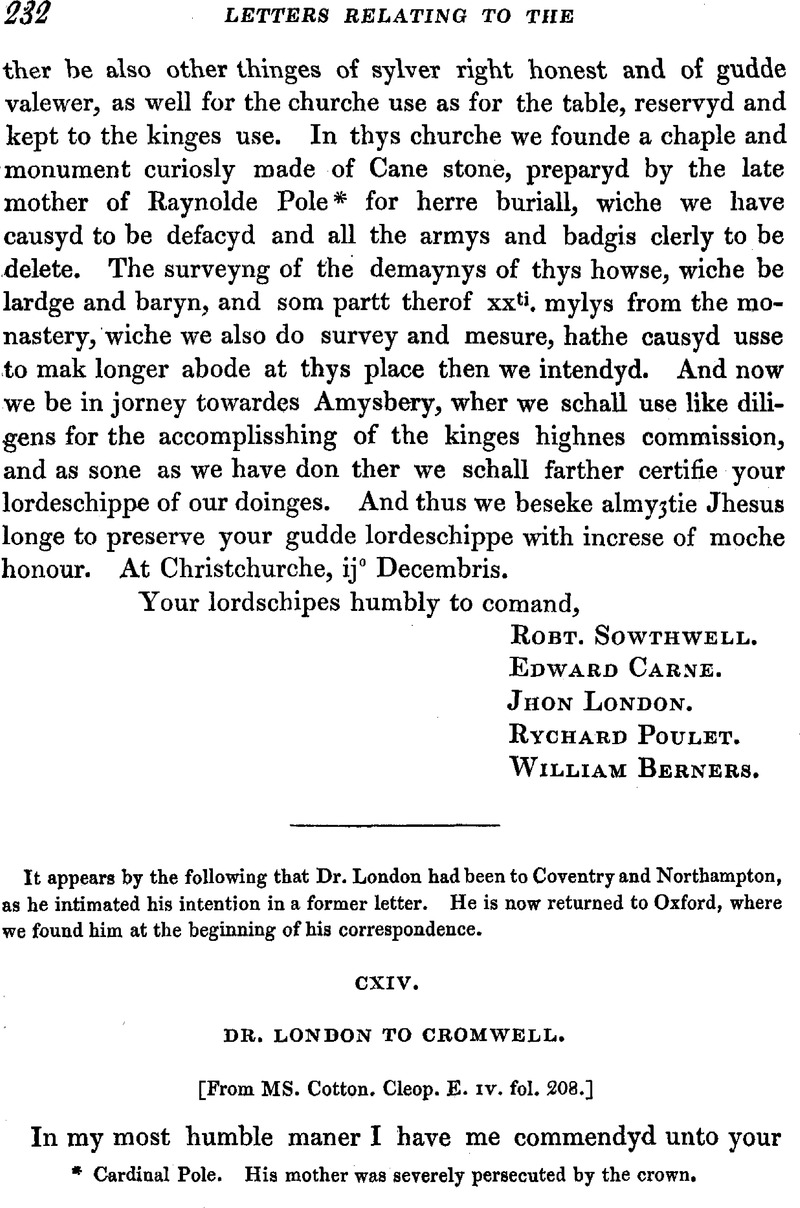No CrossRef data available.
Article contents
CXIV. Dr. London to Cromwell
Published online by Cambridge University Press: 23 February 2010
Abstract

- Type
- Chapter II. From the Dissolution of the Smaller Houses to the Passing of the Act for the Dissolution of the Larger Monasteries
- Information
- Camden Old Series , Volume 26: Three Chapters of Letters Relating to the Suppression of Monasteries , September 1843 , pp. 232 - 235
- Copyright
- Copyright © Royal Historical Society 1843
References
page 233 note* On the old custom of giving new year's gifts (érennes), still preserved in France, see Brand's Popular Antiquities, vol. i. pp. 5–11 (ed. 1841).
page 233 note † The abbey of Ensham, or Eynsham, in Oxfordshire, was founded by Athelmer earl of Cornwall and Devonshire, at the beginning of the eleventh century. It was a rich house. The last prior was Anthony Dunstan, alias Kitchen, who was subsequently (in 1545) made bishop of Landaff.
page 233 ‡ This was a small priory at Donnington, near Newbury, in Berkshire. See the Monasticon, vi. p. 1562. Henry White was the last prior.
page 233 § Sir George Darcy was the elder brother of Sir Arthur Darcy, mentioned before, and was restored to his father's title of Lord Darcy in the 2nd Edw. VI.
page 233 ║ Delapre (De-la-pri), a Cluniac nunnery in the parish of Hardingstone, founded in the reign of king Stephen by Simon de St. Liz, earl of Northampton.
page 234 note * The monastery of St. Anne near Coventry, founded by William lord Zouch in 1381, for Carthusian monks.




